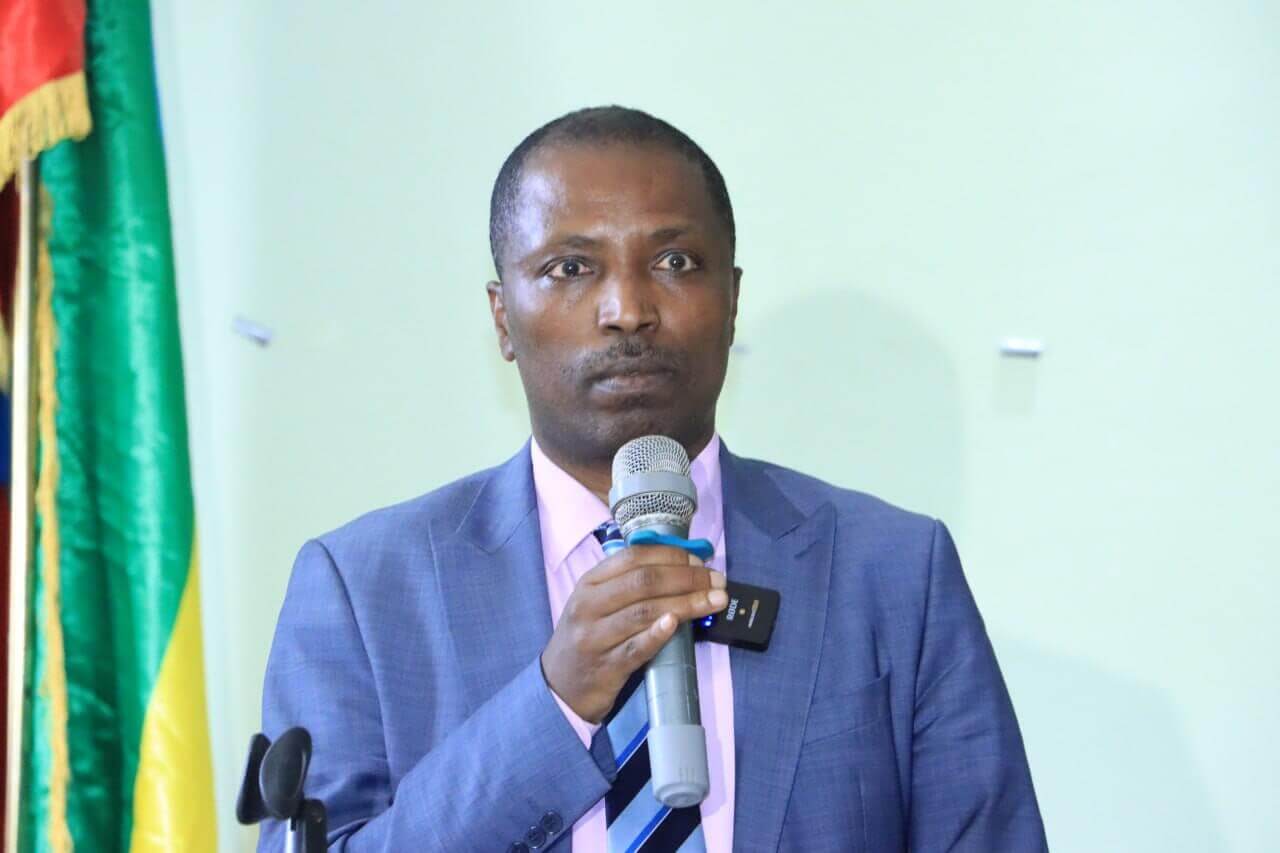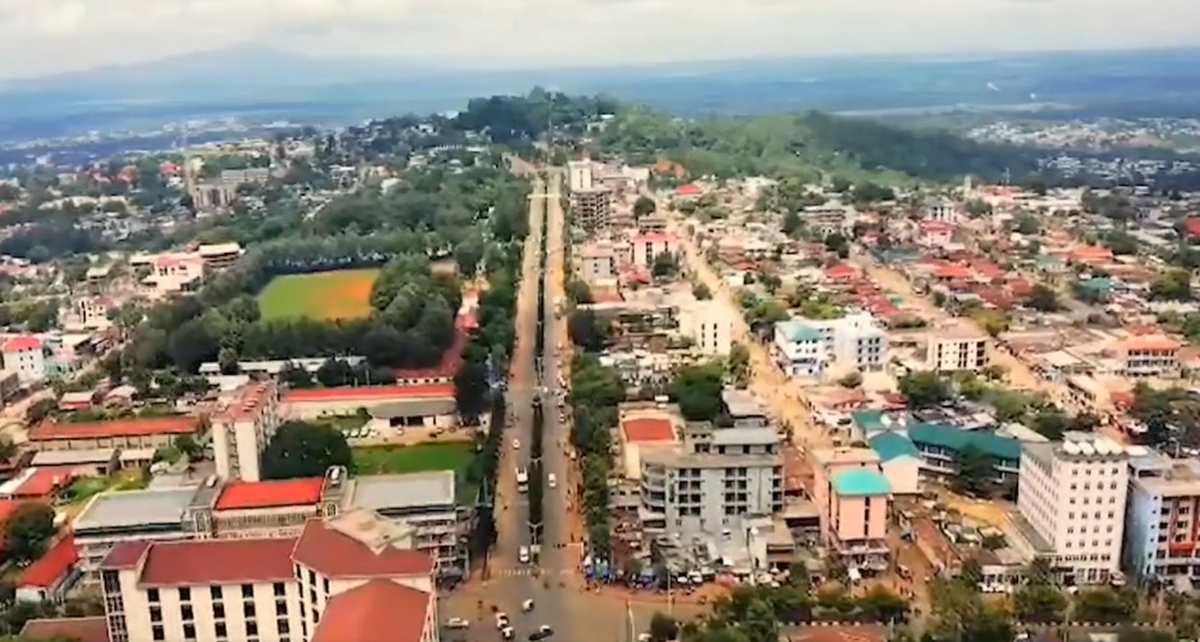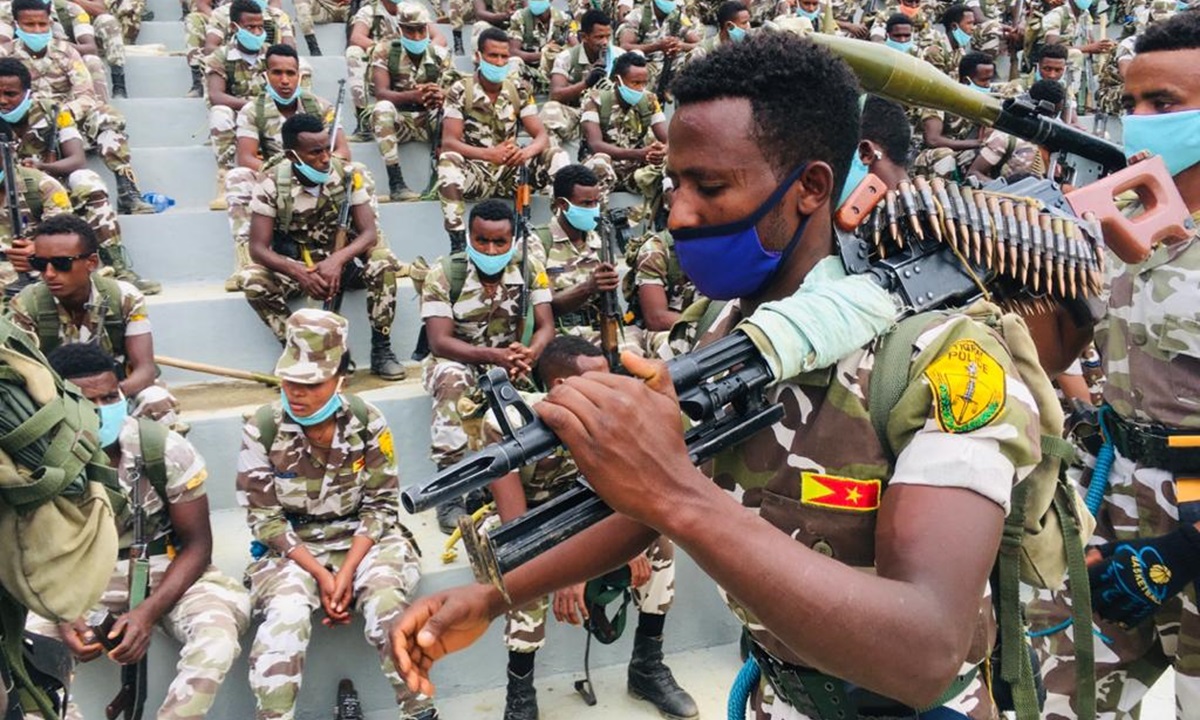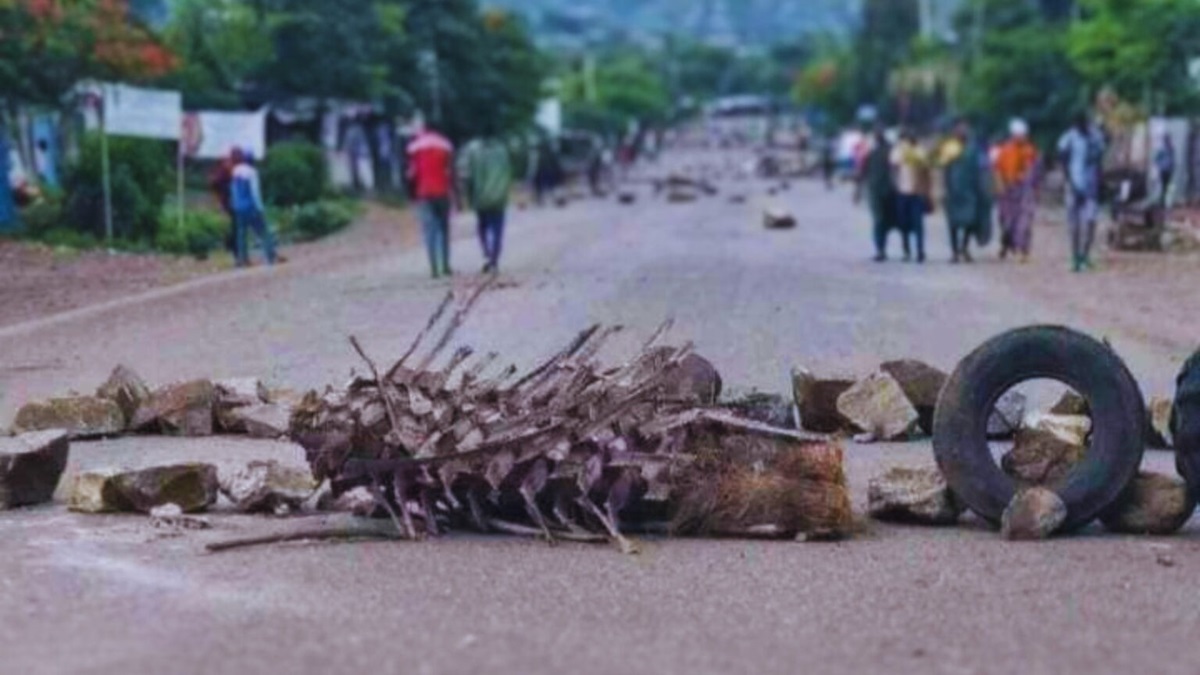In-depth: How on record yet covered up ‘extrajudicial killings’ by uniformed gov’t forces continue unabated
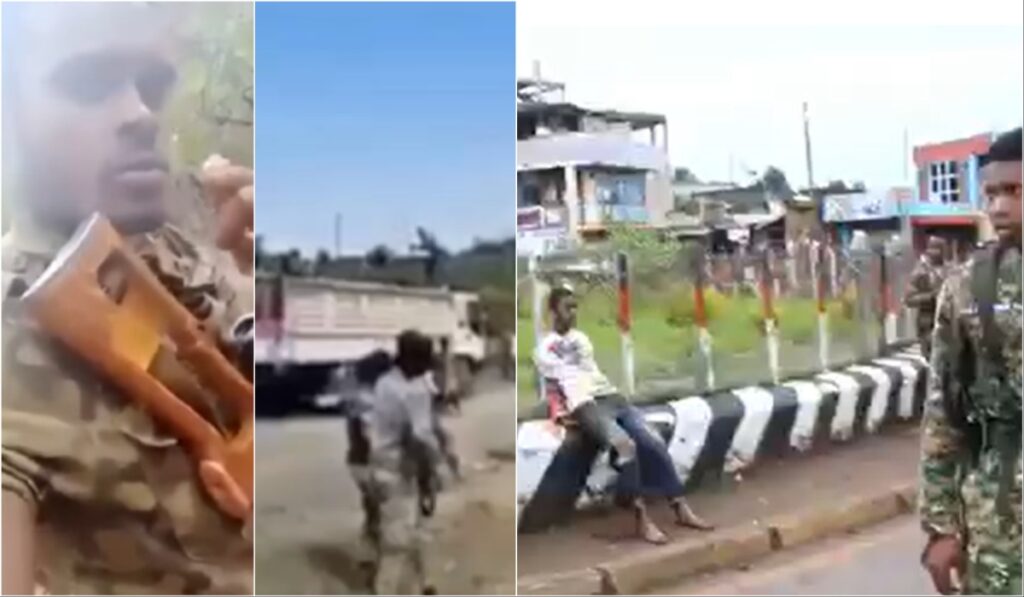
By Natnael Fite @NatieFit
Addis Abeba – A graphic video of uniformed government security forces shooting two people, in civilian clothes with their hands tied behind their backs and facing away, in the back of their heads surfaced the social media this month. The uniformed security forces involved in the execution were seen wearing Sidama regional special forces’ uniform.
AFP Fact Check and the Ethiopian Human Rights Commission (EHRC) confirmed that the clip shows an execution in the Benishangul-Gumuz region, in Western Ethiopia, which has seen recurring violence linked to ethnic tensions. EHRC described it as an “extrajudicial execution” whereas, AFP reported that the incident took place in early 2022.
Temesgen Gemechu, a native to the area who was closely following the matter, confirmed to Addis Standard that the killing took place in 2022 in Giphoo village, Dibate district, Metekel zone of Benishangul Gumuz region.
“That day, two people named Habtamu Ayana [father of three] and Takele Mengesha were killed in that inhuman manner. These people were peaceful farmers. Takele’s father was arrested. When Takele heard this, he ran to where his father was kept. Even going there directly shows that he is a peaceful man. But when he got there, they caught him and arrested him,” Temesgen said.
According to Temesgen, Takele and Habtamu were brutally murdered days after being taken to Gilgal Balas prison. He said the Ethiopian National Defense Force (ENDF), Sidama Regional Special Forces and Amhara Regional Special Forces were deployed in Benishangul Gumuz region at the time.
“You! stand properly. Don’t move”, one of the uniformed men says in Amharic as one can clearly hear from the clip. “Shoot them! Shoot them,” another one says. Two of the armed men then shoot the pair at point-blank range in the back of their heads. The victims fall to the ground. One of the armed men fires again before walking away. The individual filming the scene approaches the victims zooming in on their faces. He then directs the lens towards himself and points at it before turning the camera back towards the motionless victims.
Temesgen claims that he has concrete evidence that 78 ethnic Oromo civilians have been killed “just because of their identities” in the past two years in the Benishangul Gumuz region, and countless killing and looting have been committed by government security forces.
In a statement issued on 05 June, after the video was widely shared across social media platforms, the Sidama Region Peace and Security Office said that the armed men seen in the video wearing the regional special force’s uniform are not known and that they are not members of the regional special force. The statement which described the special force as “an army known for its good conduct, strict discipline and efficient performance of national duties at the national level,” denied involvement in the execution.
Despite lack of substantial evidence that the armed men seen in the video, are actual members of the Sidama region special force, in September 2021, Sidama regional special force along with special forces of Gambella and Southern Nations, Nationalities and People’s Region (SNNPR) were deployed to Bulan district of the Metekel Zone in Benishangul Gumuz region “to carry out a peacekeeping mission under the regional command post”.
There is neither active investigation into the incident nor publicly available information on attempts by federal or regional authorities to hold the perpetrators accountable. The EHRC Benishangul Gumuz office head Gurmesa Bafuta informed Addis Standard that it is yet to release final outcomes of the investigation into the incident and that the commission will follow up on accountability measures to be taken.
Burned to Death…
This is not the first time that government security forces have been exposed for horrific killings of civilians in Benishangul Gumuz region. Last year, a footage was circulating on social media while human beings were burned alive.
On March 2022, a gruesome five minute footage showing government security forces [members of the special forces from the Amhara and Southern Nations Nationalities and People’s (SNNP) regional states along with members of Ethiopian National Defense Forces] burning a victim to death in Aysid Kebele in Guba woreda of the Metekel zone in the Benishangul Gumuz region flooded the social media.
The perpetrators were heard saying they were avenging the death of a security personnel who was a major in his rank. They were also heard exchanging curse words and using dehumanizing language towards their victims, one of whom was seen to be alive while being burned in the fires.
“The act is extremely horrific and inhumane,” the federal government said in a statement issued on March 12, and pledged to bring perpetrators to justice, but failed to mention both the circumstances in which its security forces committed the crime and the identity of the victims.
However, 15 months after this inhuman act, neither the federal nor the regional government has yet publicly prosecuted the perpetrators. According to the EHRC’s Benishagul Gumuz region office, four individuals were arrested during that time, but nothing is known whether the individuals were charged or given a verdict.
Public Execution of Amanuel Wondimu
On May 11, 2021 a young man, named Amanuel Wondimu, was publicly executed shortly after being interrogated by armed members of the Oromia Special Forces in Western Oromia, Dambi Dollo city. A footage posted on the Facebook page of the communication office of Dambi Dollo city emerged where he was seen battered and paraded while he was forced to shout “I am a member of Abba Torbe. Don’t do what I did. Learn from me.”
The city administration explained the incident as measures being taken on a member of ‘Abba Torbe’, a killing squad that allegedly operates under the Oromo Liberation Army (OLA) which the government refers to as ‘Shene’. After Amanuel’s killing, security forces harassed his family and mourners who were present at his home to console them.
Addis Standard learnt from his relatives that the family was asked to take down the tent set up to host the neighbors and relatives who came to offer comfort to the family. And about 35 mourners including Keneni Wondimu, Amanuel’s six years old sister, were arrested and later released after hours of detention. Another close relative of Amanuel told Addis Standard that Amanuel’s parents were beaten the day he was killed.
The then head of the security bureau of Kellem Wollega zone, Tesema Wariyo, claimed that it was confirmed that Amanuel was a criminal even though he was not put on trial. The Ethiopian Human Rights Commission (EHRC) condemned the incident calling it “the parading and extrajudicial killing”. EHRC’s call for an investigation and accountability measures fell on deaf ears.
The Gambella Massacre
In June 2022, a disturbing footage of a member of the Gambella regional government security forces shooting repeatedly at an unarmed man whose hands are tied behind his back in the capital of Gambella regional state made rounds on several social media platforms following what the Gambella Liberation Front (GLF) and the Oromo Liberation Army (OLA) called a joint operation in the city.
Residents of Gambella city who insisted on remaining anonymous told Addis Standard during that time, government security forces were searching residences for alleged members of “Shene”, and were shooting at anyone who ran away from them, men whose hair is braided and especially those who speak Afaan Oromo.
In September the same year, Ethiopian Human Rights Commission (EHRC) said in a report that civilians were extra judicially killed mainly by government security forces during a clash between the regional security forces and coalition of armed groups Oromo Liberation Army (OLA) and Gambella Liberation Front (GLF).
At least 50 civilians, who were accused of “hiding Shene fighters and weapons in their homes”, were killed “mainly by government forces” between the afternoon of 14 June and 16 June, the reports says. Women and mentally ill individuals were among the victims. In addition at least 25 people were lightly and seriously injured, numerous people were beaten and tortured, individuals were vandalized and looted.
The commission also confirmed that families of the deceased were denied bodies of their relatives and the bodies of civilians killed by the regional security forces were collected by the regional special forces and regular police in trucks and taken to unknown locations for mass burial.
Later in October, the Gambella regional government rejected and condemned EHRC’s report. The regional government said in a statement, that the EHRC’s report is “very much exaggerated and didn’t take facts on the ground into consideration”.
In March, a graphic footage of regional police members brutally beating and stoning to death people in civilian clothes lying on the ground of what appears to be a police compound has been widely shared on social media. The EHRC confirmed that the footage was recorded during the 14 June incident.
Nine months after the tragic mass killing, on 24 March the regional police commission announced that 13 officers and civilian leaders who were suspected of complying with the human rights violations committed during the 14 June incident were apprehended pending investigations.
On April 03, Tut Kor, the former deputy commissioner of the Gambella regional police commission, was brought to court suspected of gathering police members and commanding them to kill innocent civilians during the incident.
The former deputy police chief has been accused of ordering the killing of civilians who were suspected of leaking information to the members of the rebel group during the attack. “At that time, when the police forces were killing innocent people, the deputy commissioner should have stopped them, he rather compiled and passed it in silence,” the investigating police told the hearing.
However, as of the compilation of this report, nothing has been publicly said about the subsequent court proceedings.
“The Gross Immunity Coverage”
Incidents where government security forces commit executions while recording themselves have been increasing over the past years in the context of the war in the Northern part of the country and other conflicts in other parts of the country.
The widely reported and condemned massacre of at least 15 men by uniformed members of Ethiopian military at a place called Mahibere Dego in Tigray in 2021, a massacre of at least 30 unarmed men in Chefa Robit, Amhara region and an incident where members of the Oromia special forces in Guji, Southern Oromia burned a civilian house are among the many incidents caught on camera, yet left unprosecuted at least publicly.
Abdi Jibril (PhD) commissioner for civil and political rights at the EHRC told Addis Standard that the commission has documented and invested incidents where government security forces commit atrocities on the camera, adding that based on the outcomes of the investigations the commission has been putting forward recommendations for the government to conduct its own investigation and ensure accountability.
The commissioner said the commission also conducts follow ups on accountability measures taken by the government, but noted that he doesn’t have data of the follow ups on the specific cases mentioned in this report.
Yared Hailemariam, Director of the Ethiopian Human Rights Defenders Center, speaking to Addis Standard shared his concerns about the killings of civilians by government security forces and the increasing lack of accountability for the actions committed saying that “such practices are increasing now more than ever.”
“In the past, it was difficult to investigate and identify perpetrators because most of the killings committed by government forces against civilians were carried out in secret. Now they record and release their own videos showing every step of the execution, so it is not difficult to identify them. But it is the gross immunity coverage on the government bodies that is the problem. Thus, while we see so many people being killed and burned alive, there is no proven responsibility yet.”
Yared said government security forces are risking the safety and security of citizens as opposed to their responsibility to ensure it, adding that the process is further damaging the country’s tarnished reputation for human rights protection, making the security of citizens and the country out of control.
He said that the government should bring its security forces to justice for such crimes and all relevant bodies, including human rights organizations should put pressure on the government to ensure accountability for crimes committed in the past.
Addis Standard’s repeated attempts to reach out to the Benishangul Gumuz, and Oromia regions’ peace and security bureaus to get comments for this article were not successful. AS


